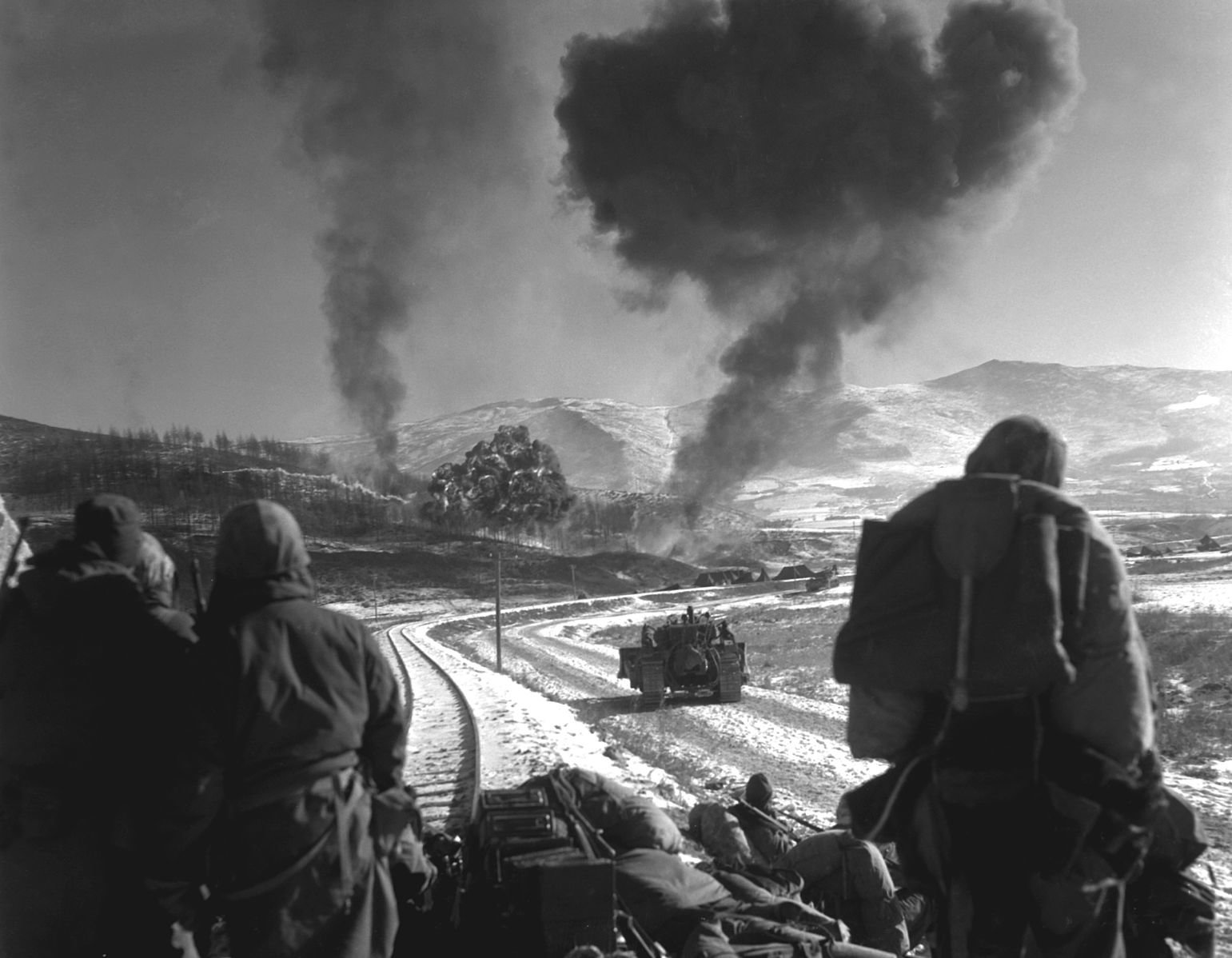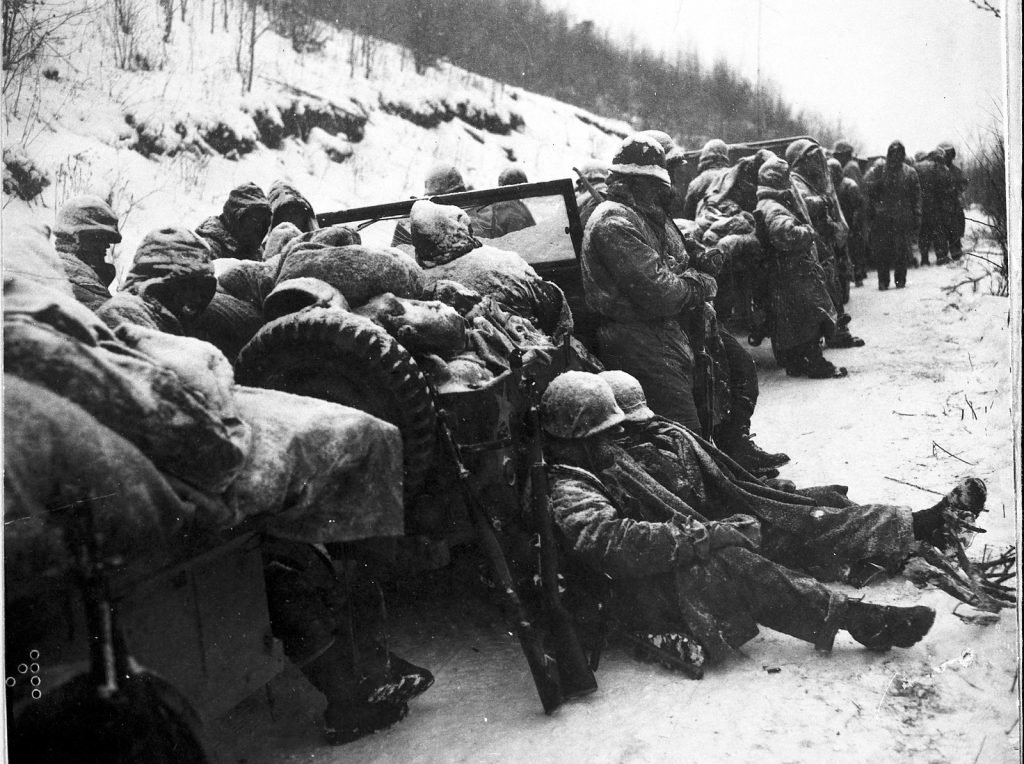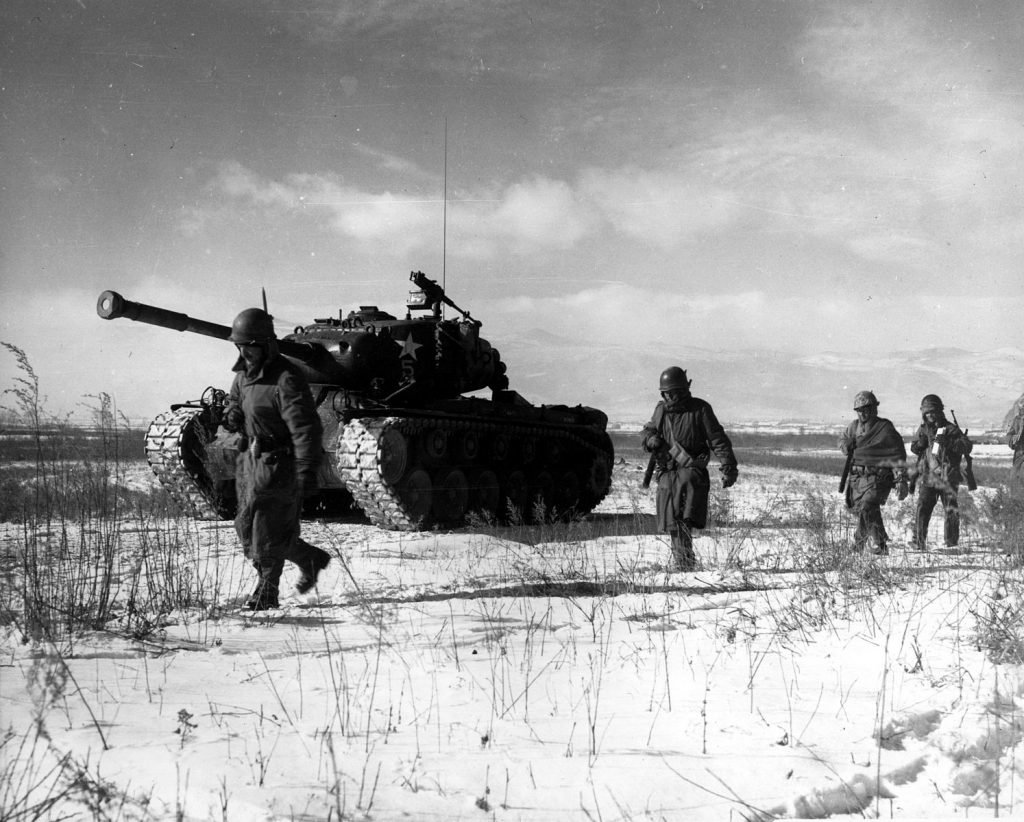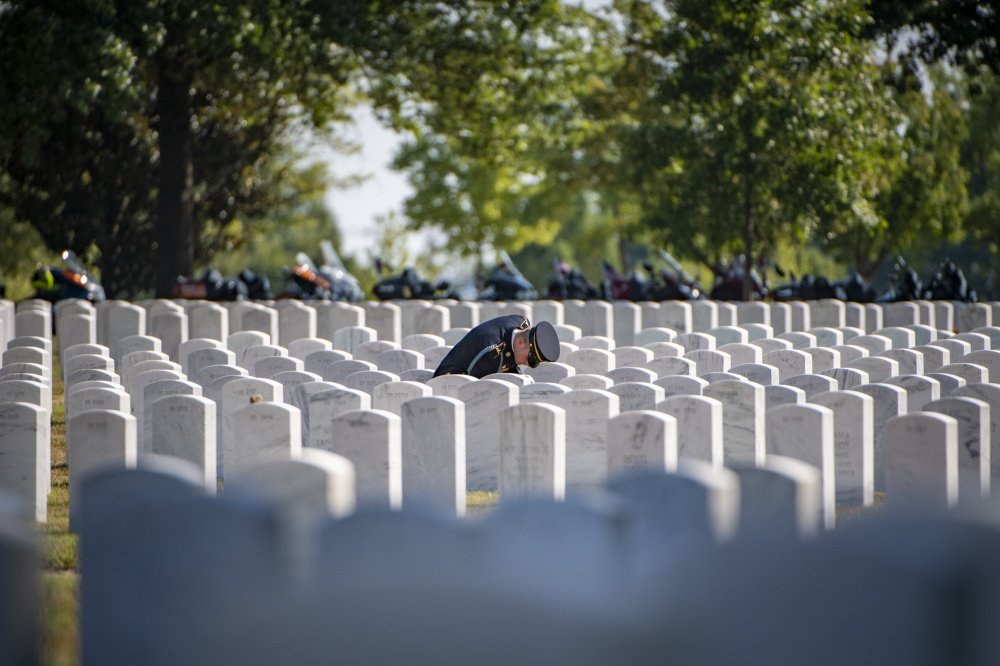One of the ‘Chosin Few’ Will Rest in Peace at Last — DOD Identifies Remains of Army Corporal Killed in Korean War Battle

U.S. Marines watch explosions of bombs dropped by Marine Vought F4U Corsairs during the Battle of Chosin Reservoir, Korea, in December 1950. Photo by Cpl. P. McDonald, USMC via Wikimedia Commons.
A Department of Defense agency announced on Wednesday that its investigators had positively identified the remains of an Army soldier killed during the Korean War’s Battle of the Chosin Reservoir in December 1950.
The Defense POW/MIA Accounting Agency, or DPAA, announced in a release that it had “accounted for” Army Cpl. Roy Thomas on Tuesday. In late 1950, 22-year-old Thomas was a member of the Army’s Company M, 3rd Battalion, 31st Infantry Regiment, 7th Infantry Division.
Thomas was reported missing in action on Dec. 12, 1950, after his unit was attacked by Chinese forces as they withdrew along a mountain road near the Chosin Reservoir in today’s North Korea.
Thomas’ remains were included in the 55 boxes of remains repatriated to the US by the Democratic People’s Republic of Korea in 2018. DPAA members traveled to North Korea to take possession of the 55 boxes and transported them to the agency’s laboratory in Hawaii. However, DPAA investigators “didn’t have any role in the search and recovery of any of the remains inside the boxes,” Army Sgt. 1st Class Sean Everette, a DPAA spokesman, told Coffee or Die Magazine in an email.
Everette added that more details will be available after “Thomas’s family has had their full briefing with the Army Casualty Office.”
According to US government archives accessible online, Thomas’ home of record was Baltimore, Maryland.

Legendary for its fierce combat and harsh winter conditions, the Battle of the Chosin Reservoir pitted some 30,000 US Army soldiers and Marines (along with troops from the United Kingdom and the Republic of Korea) against no fewer than 120,000 Chinese People’s Liberation Army regulars.
White-clad Chinese soldiers attacked the UN force in repeated waves, exacting heavy casualties. Ultimately, the US and allied forces regrouped and attempted a harrowing withdrawal along a winding mountain road. On the way, they faced relentless Chinese attacks — sometimes involving brutal, close-quarters encounters.
Also known as “Task Force Faith” and the “Chosin Few,” Thomas’ unit — the 31st Regimental Combat Team, or 31st RCT — ultimately suffered a casualty rate between 90% and 95% during the battle.
“Destruction was total due to lack of ammo, leadership killed and other obstacles placed in our path,” Ray Vallowe, a US Army veteran of the Battle of the Chosin Reservoir, wrote in 2000.

On Nov. 27, 1950, the 31st RCT, which was ordered to replace the 5th Marine Regiment on the east side of the Chosin Reservoir, arrived at a place called the P’ungnyuri Inlet. That night, and for the next three nights, Chinese communist forces launched a massive surprise attack against the Americans.
On Dec. 1, the 31st RCT withdrew to Hagaru-ri at the base of the Chosin Reservoir, consolidating with the remains of other units. Heavy Chinese attacks continued there until Dec. 6, forcing the 31st RCT into another fighting withdrawal to Hamhung — a North Korean port some 70 miles away.
From Dec. 9 to 12, many US and allied troops were killed or went missing during the heavy fighting that took place along the length of the winding route. Most of the officers were killed, and many of the soldiers suffered frostbite. Due to the cold, minor wounds often became life-threatening.
Of the 1,777 American soldiers the 31st RCT positioned at the Chosin Reservoir from Nov. 27 to Dec. 2, by Dec. 12 there were 1,392 missing in action. By the battle’s end, about 6,000 Americans were either dead or missing; thousands more were wounded.
US defense agencies estimate that some 50,000 Chinese soldiers died during the battle — including the eldest son of Mao Zedong, former chairman of the People’s Republic of China.

Based at Joint Base Pearl Harbor-Hickam in Hawaii, the Defense POW/MIA Accounting Agency has a motto of “fulfilling our nation’s promise.”
The agency’s teams dig through archives, conduct interviews, and scour past battlefields like archaeologists: all with the hope that finding the remains of long missing American service members might give some comfort to surviving family members and honor the sacrifices of the fallen.
On June 12, 2018, President Donald Trump met with North Korean Supreme Leader Kim Jong Un in Singapore, marking the first meeting between the two countries’ leaders. Trump and Kim signed a joint statement, which included a commitment from Pyongyang to return the remains of American service members killed during the Korean War.
On July 27, 2018, North Korea turned over 55 boxes that allegedly contained the remains of Americans. Those remains arrived in Hawaii on Aug. 1, 2018, and were sent on to the DPAA’s laboratory for examination. To identify remains, DPAA scientists use DNA analysis, as well as dental, anthropological, and chest X-ray records.

Apart from the identification of Thomas’ remains, the DPAA also reported on Wednesday that it had “accounted for” Army Pfc. William Sharp, 18, who was killed during the Korean War on July 24, 1950. According to the Pentagon agency, Sharp’s unit “sustained heavy casualties” in combat against the North Korean army near Hwanggon, South Korea. In the ensuing retreat, Sharp’s body was not recovered.
The DPAA was formed in 2015 to consolidate the efforts of three Department of Defense programs that searched for America’s missing from foreign wars. In its first year, the DPAA identified 164 Americans, followed by 201 in 2017 and 2,016 in 2018. There are currently more than 82,000 American service members still missing across the world.
Some 7,568 Americans remain unaccounted for from the Korean War. Of that number, the DPAA lists 641 missing from the Marine Corps, 276 from the Navy, 908 from the Air Force, 5,742 from the Army, and one sailor from the Merchant Marine.

BRCC and Bad Moon Print Press team up for an exclusive, limited-edition T-shirt design!
BRCC partners with Team Room Design for an exclusive T-shirt release!
Thirty Seconds Out has partnered with BRCC for an exclusive shirt design invoking the God of Winter.
Lucas O'Hara of Grizzly Forge has teamed up with BRCC for a badass, exclusive Shirt Club T-shirt design featuring his most popular knife and tiomahawk.
Coffee or Die sits down with one of the graphic designers behind Black Rifle Coffee's signature look and vibe.
Biden will award the Medal of Honor to a Vietnam War Army helicopter pilot who risked his life to save a reconnaissance team from almost certain death.
Ever wonder how much Jack Mandaville would f*ck sh*t up if he went back in time? The American Revolution didn't even see him coming.
A nearly 200-year-old West Point time capsule that at first appeared to yield little more than dust contains hidden treasure, the US Military Academy said.












